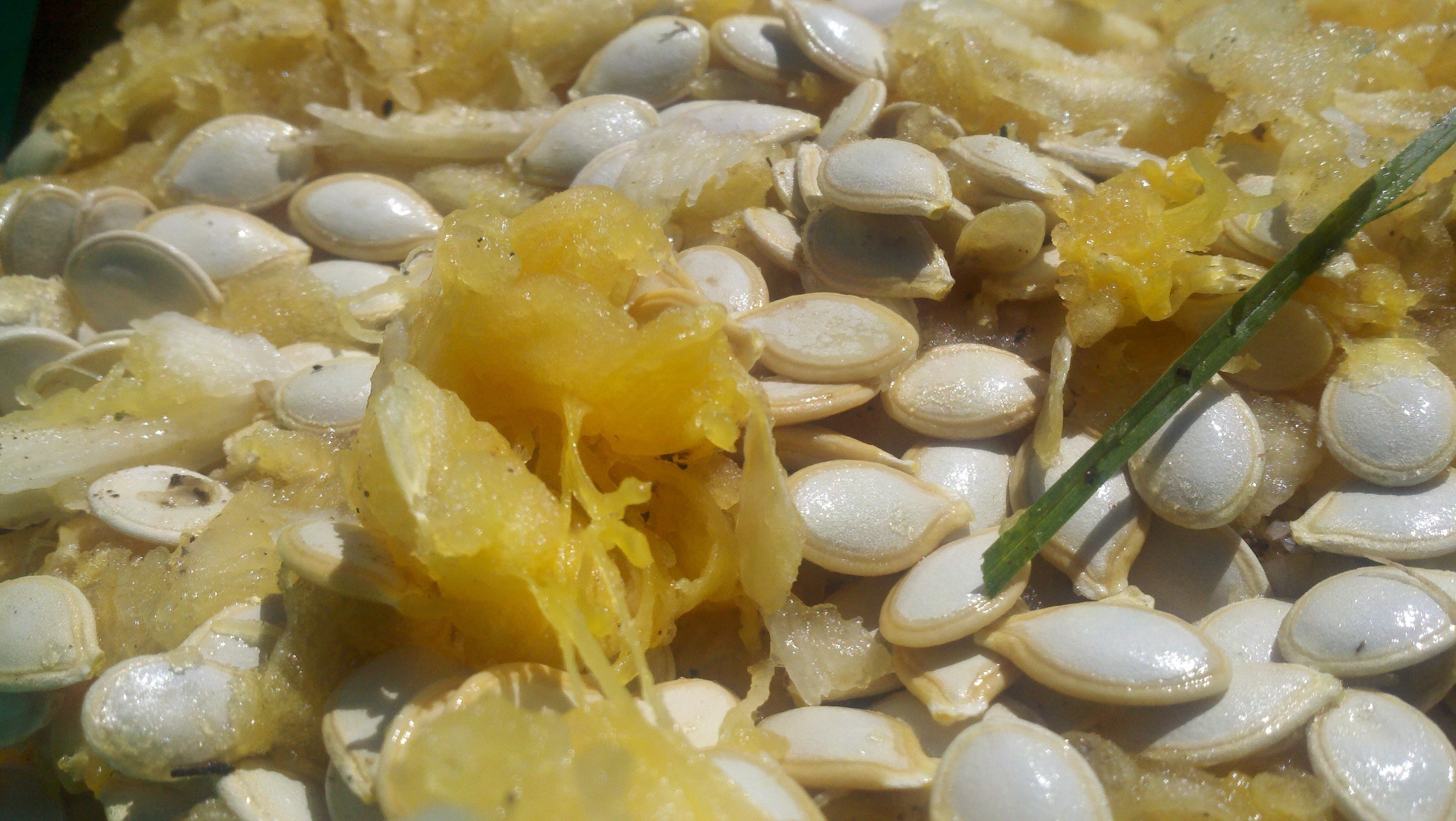
When zucchini is at it's edible state, it is an immature fruit. To successfully save seeds from zucchini, you have to let the fruits get mega. You have to leave them on the plant well after you would want to eat them. They should get large and swollen, with a hard skin. At this point, the seeds are mature, though the fruits are inedible.
Zucchini fall under the wet seed processing category. This refers to the moist state of the seed, and the need for water as a means to further clean and process the seeds before they are dried. The process for zucchini is straightforward but involves a few steps.

1. Cut open the zucchini. Since the skin is tough, you might need more than a simple kitchen knife to cut through it. You can cut the squash into sections, slice it down the side, or mash it with a stomper.
2. Scoop the seeds out. They will be surrounded by the spongy and possibly soggy flesh. Scoop the seeds and whatever is attached to the seeds into a container. Discard the rest of the fruit into your compost pile.
3. Ferment the seeds. The fermentation aids in the cleaning of the seeds. You might need to add a bit of water to your seed/zucchini flesh mixture. Add just enough to make a wet mass. The fermentation process for zucchini seeds is quick, especially if it is warm. It takes 1-2 days. The seed/flesh/water mixture should smell sour, and the seeds should appear very clean when handled.

4. Clean the seeds. Once the fermentation process is complete, you need to get the seeds out of the squash mixture. This is done most effectively with water. Dilute the ferment with plenty of water so that the heaviest squash seeds sink to the bottom. The flat, empty seeds should be the only ones that float to the top. Pour off the very top of the diluted mixture, taking care not to loose any of the good, heavy seeds that are at the bottom.
Now you can do the final cleaning. It is helpful to use a screen or sieve for this step. Empty your seeds onto the screen and spray them with water until all the flesh is separated and you can gather the clean seeds.
5. Dry the seeds. Immediately after cleaning the seeds, spread the clean seeds onto a clean, dry screen in a single layer and place in a warm, dry spot. The drying process can take a few days. Stir the seeds around periodically to make sure there are no damp pockets.
6. Label and store the seeds. Once the seeds are completely dry, place in a paper envelope and label them. Store in a cool, dry, dark place until you are ready to use them.





